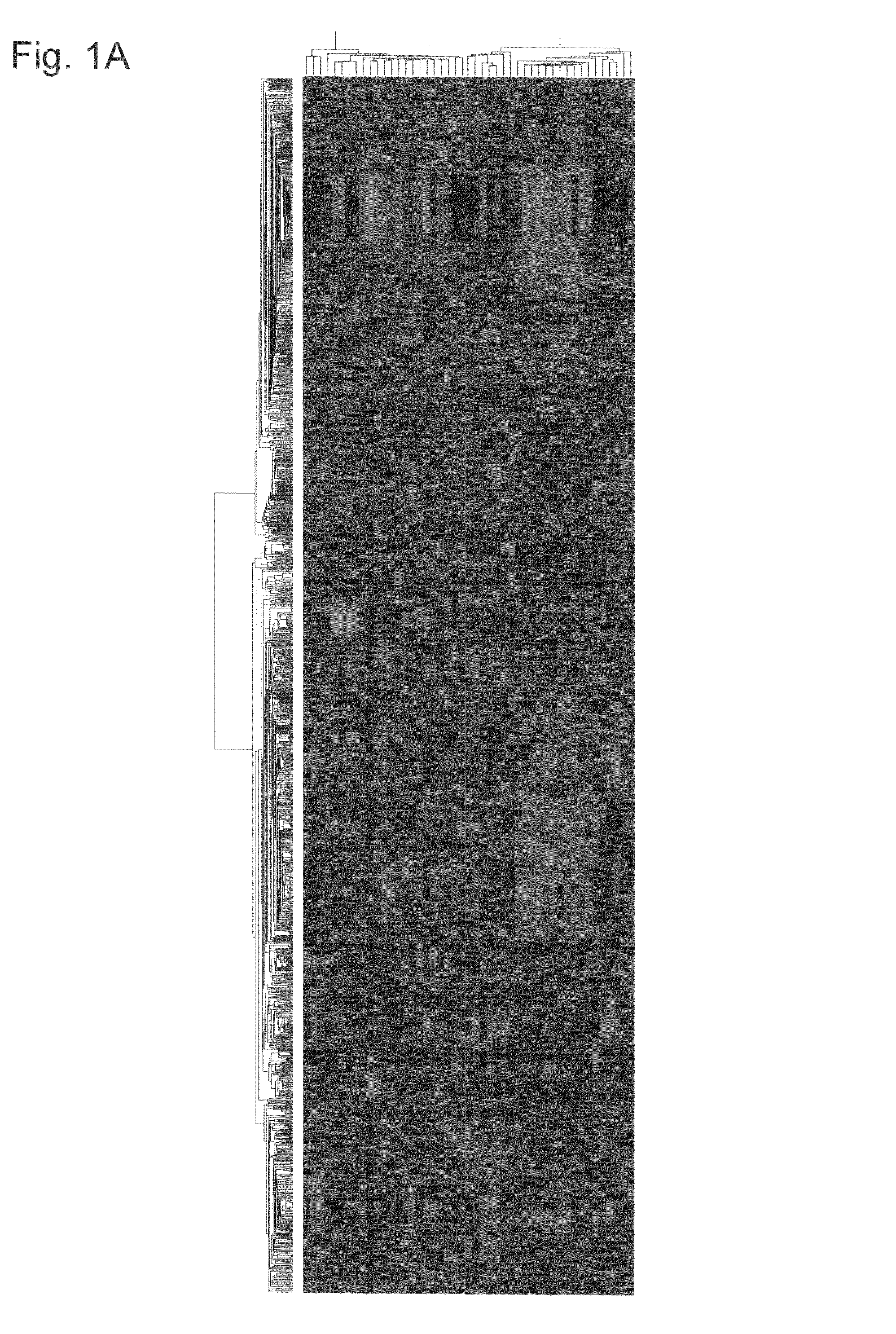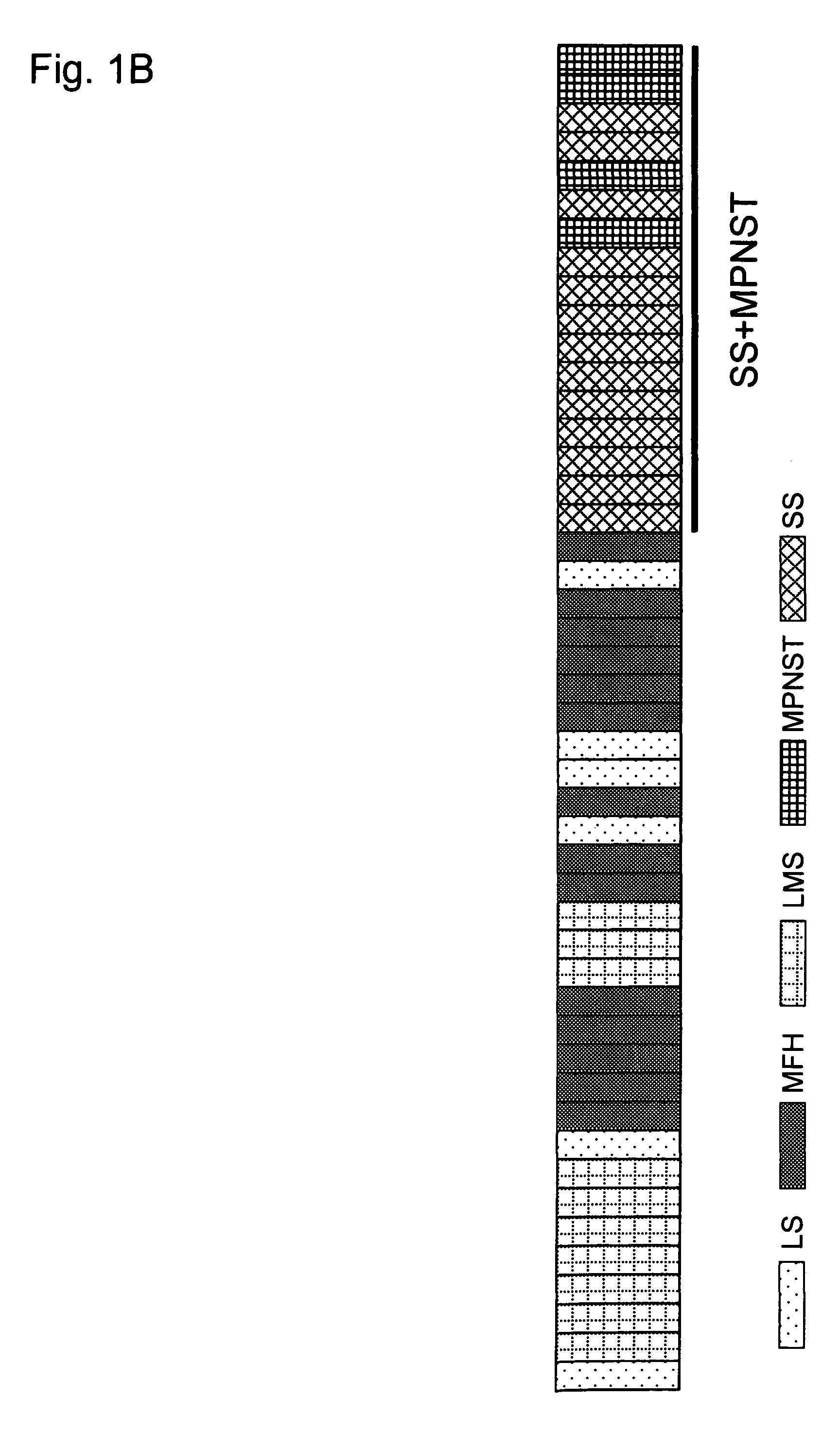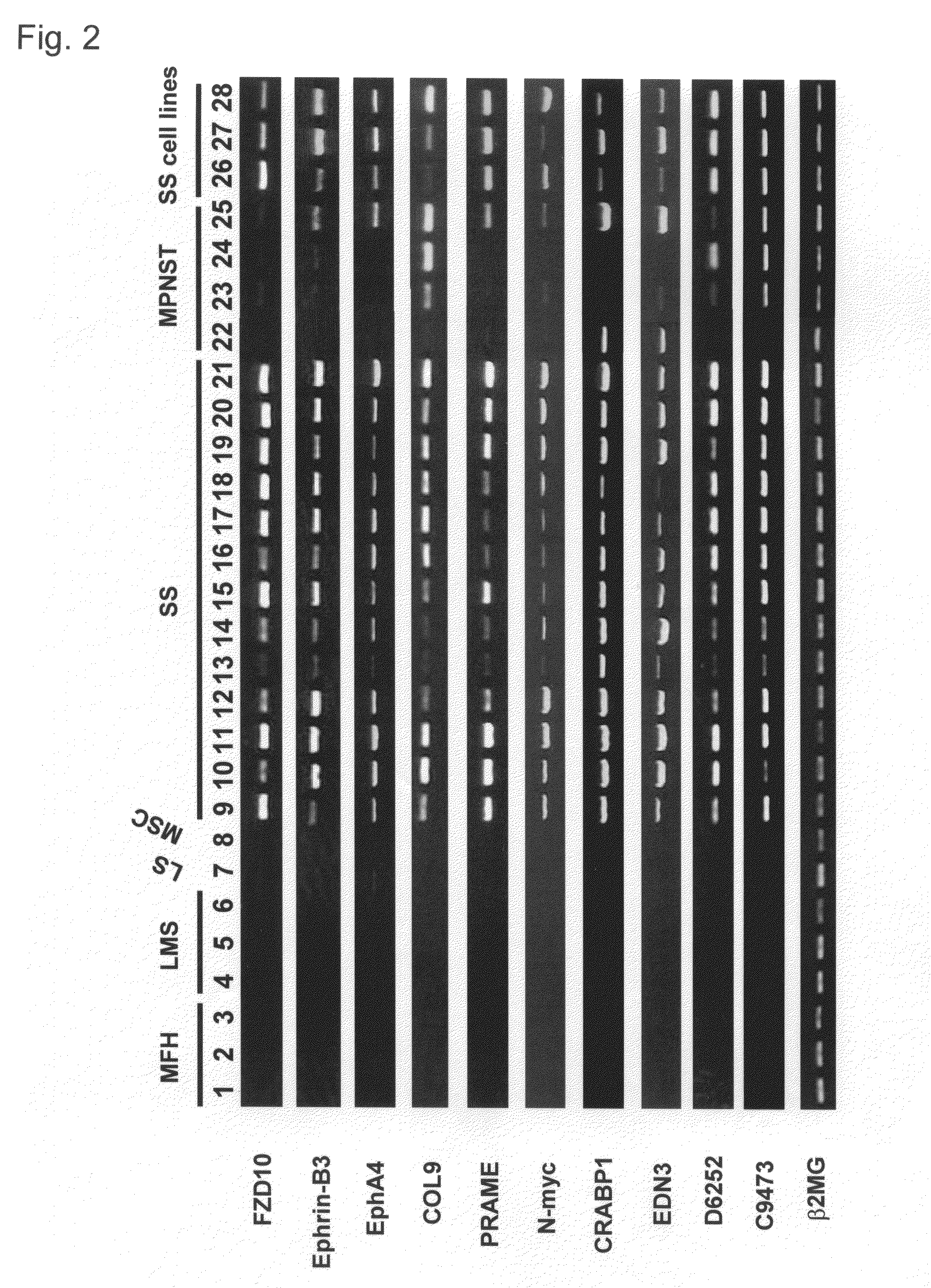Method for treating synovial sarcoma
a synovial sarcoma and sarcoma technology, applied in the field of diagnostic methods of synovial sarcoma, can solve the problems of difficult to identify specific proteins expressed in tumors, difficult to treat diseases, and spindle cell sarcomas in adults
- Summary
- Abstract
- Description
- Claims
- Application Information
AI Technical Summary
Benefits of technology
Problems solved by technology
Method used
Image
Examples
example 1
General Methods
(1) Tissue Samples
[0270]Primary or recurrent STS tissues were obtained from 47 patients who underwent surgical resection, including 13 with SS and 34 with spindle cell sarcomas (14 MFHs, 10 LMSs, 3 PLSs, 3 DLSs and 4 MPNSTs). Among the four MPNSTs, three had developed in patients with clinical diagnosis of type 1 neurofibromatosis (MPNST248, MPNST397, and MPNST558). Tumor samples were snap-frozen in liquid nitrogen immediately after resection and stored at −80° C. until preparation of RNA. Tissue specimens were obtained in the same manner from 15 additional SS patients to verify the expression patterns. Part of each tumor sample was fixed in 10% formalin and routinely processed for hematoxylin and eosin staining to establish a pathological diagnosis by the present inventors. Histological subclassification of SS, either monophasic or biphasic, was determined by the standard criteria, mainly based on the presence of an epithelial component (Weiss, S. W. and Goldblum, J....
example 2
Cluster Analysis of Gene Expression Profiles
[0286]All 47 tumors were first examined for the presence of SYT-SSX fusion transcripts, by means of RT-PCR. In all of the 13 tumors that had been diagnosed as SS, fusion transcripts of either SYT-SSX1 (11 cases) or SYT-SSX2 (2 cases) were identified, but no evidence of SYT-SSX fusion transcripts in any of the 34 tumors diagnosed as other histological types were found. The expression profiles of all 47 STS cases were then subjected to a hierarchical clustering analysis. Reproducible clusters were obtained with 1,204 genes (see Example 1); their expression patterns across the 47 STS cases are shown in FIGS. 1A and 1B. MFH, LMS, DLS, and PLS were scattered into several different clusters, and failed to compose a disease-specific cluster. On the contrary, SS cases showed a distinct cluster along with MPNST. Four tumors with biphasic features (SS190, SS334, SS487 and SS582) were clustered into one group, but nine tumors with monophasic features...
example 3
Identification of Gene with Clinically Relevant Expression Patterns in Synovial Sarcoma Cells
(1) Identification of Up-Regulated Genes Common to SS Cases
[0287]Twenty-six genes, including four ESTs were identified, that were commonly up-regulated in SS (Table A). Among them frizzled homolog 10 (C0671) and one EST (A8647) were up-regulated specifically in SS. The remaining 24 genes were also expressed in MPNST, at the same or lower levels. The results of semi-quantitative RT-PCR experiments confirmed the specific expression of these genes in SS, or SS and MPNST (FIG. 2). In addition, expression of all 26 genes was detected in three SS cell lines, indicating that this activity was intrinsic to SS cells and not induced by in vivo environments. In most of the known genes that were up-regulated commonly in SS and MPNST, the proposed function and distribution of expression were related to neural tissues, e.g. EphA4, ephrin-B3, and endothelin 3 (EDN3). Moreover, SS expressed additional marke...
PUM
| Property | Measurement | Unit |
|---|---|---|
| weight | aaaaa | aaaaa |
| pH | aaaaa | aaaaa |
| pH | aaaaa | aaaaa |
Abstract
Description
Claims
Application Information
 Login to View More
Login to View More - R&D
- Intellectual Property
- Life Sciences
- Materials
- Tech Scout
- Unparalleled Data Quality
- Higher Quality Content
- 60% Fewer Hallucinations
Browse by: Latest US Patents, China's latest patents, Technical Efficacy Thesaurus, Application Domain, Technology Topic, Popular Technical Reports.
© 2025 PatSnap. All rights reserved.Legal|Privacy policy|Modern Slavery Act Transparency Statement|Sitemap|About US| Contact US: help@patsnap.com



